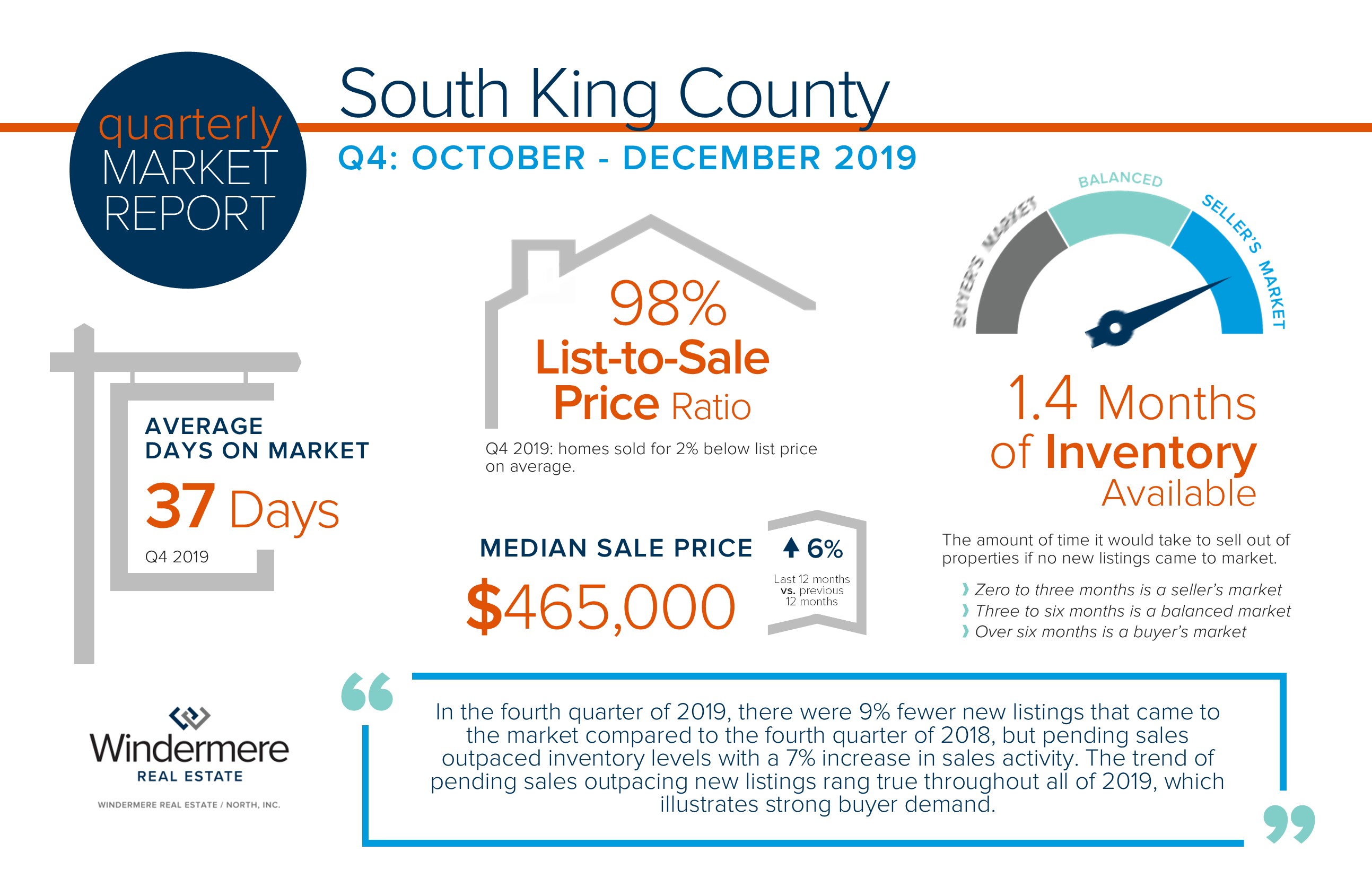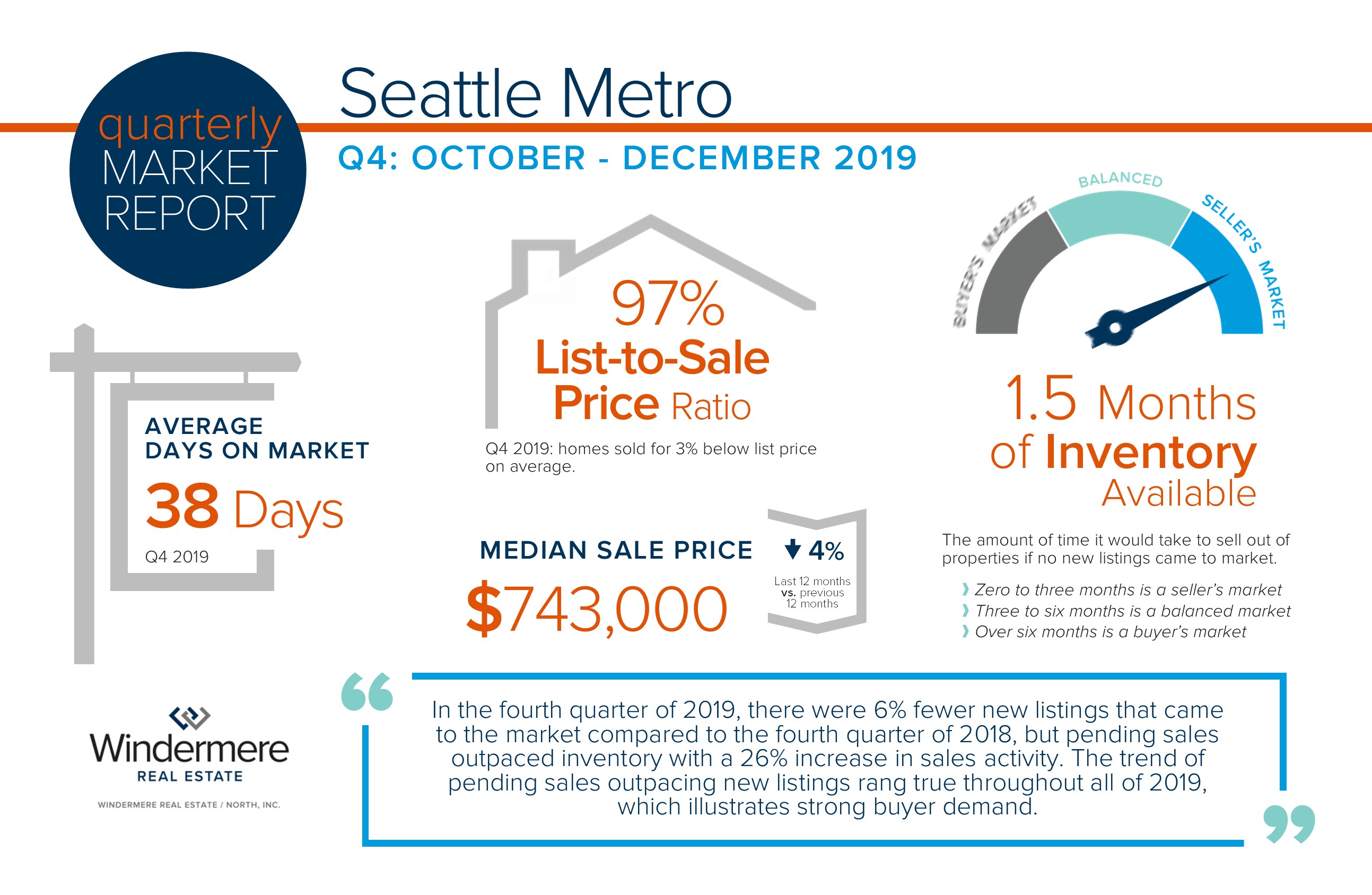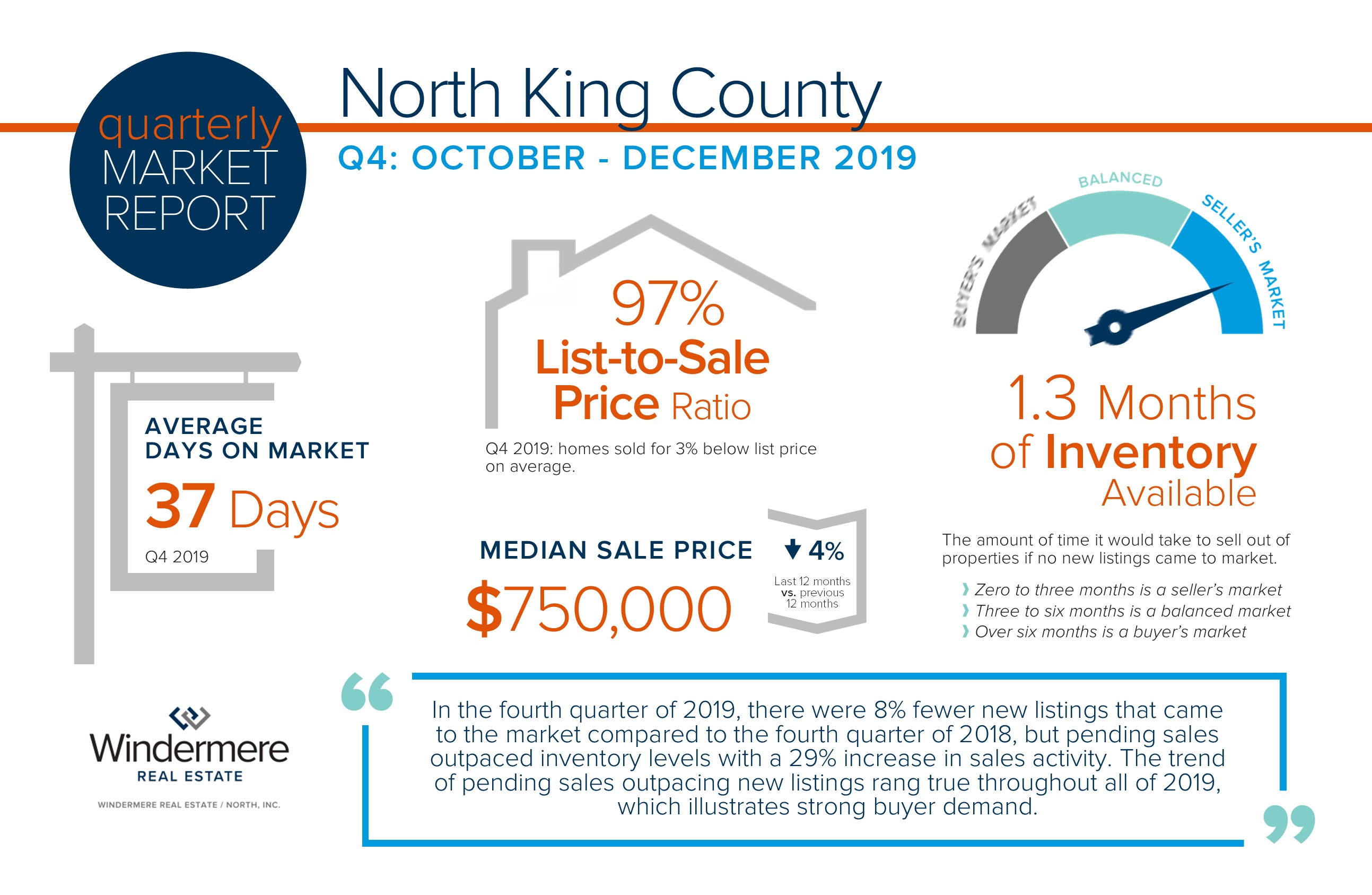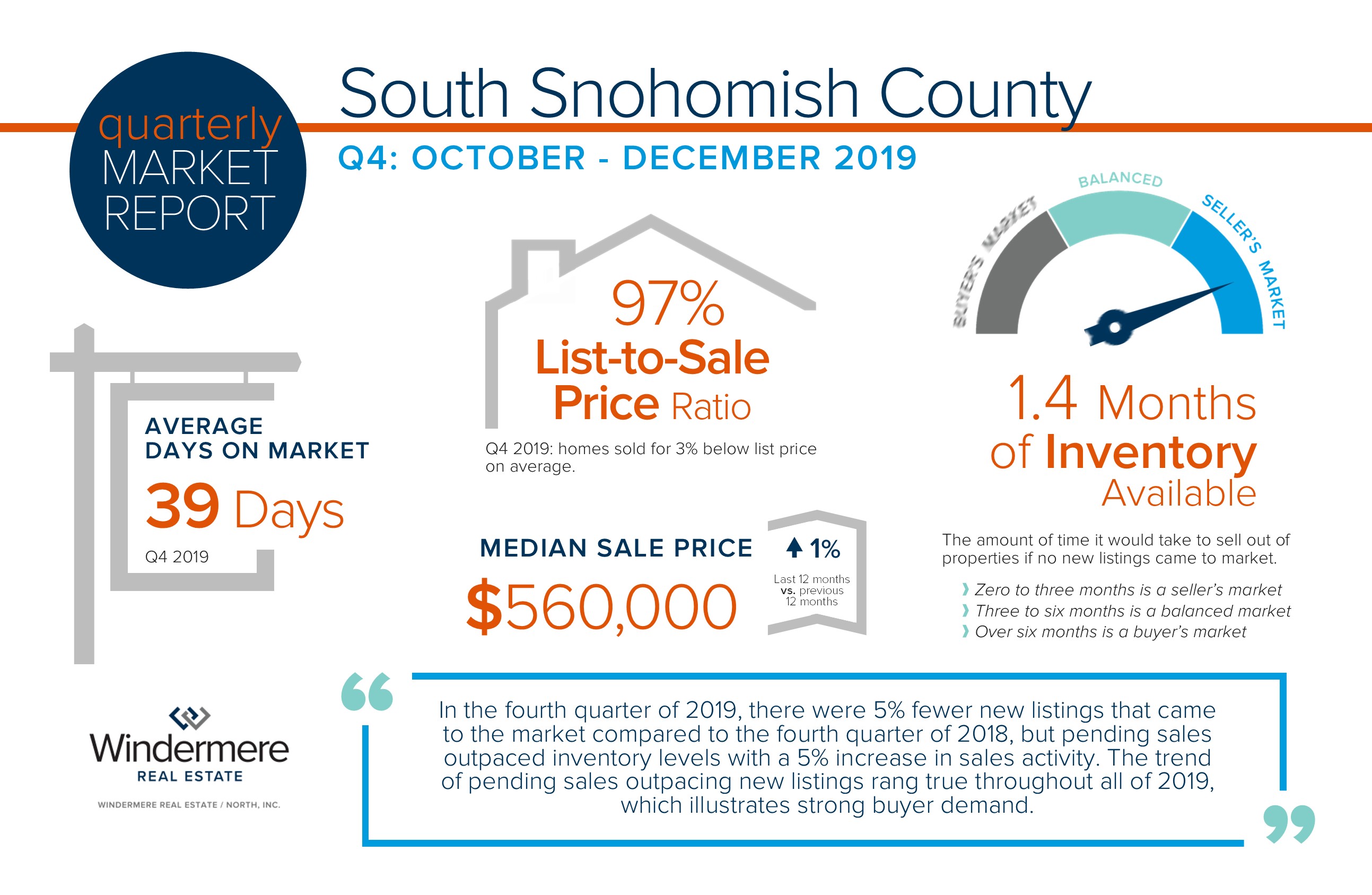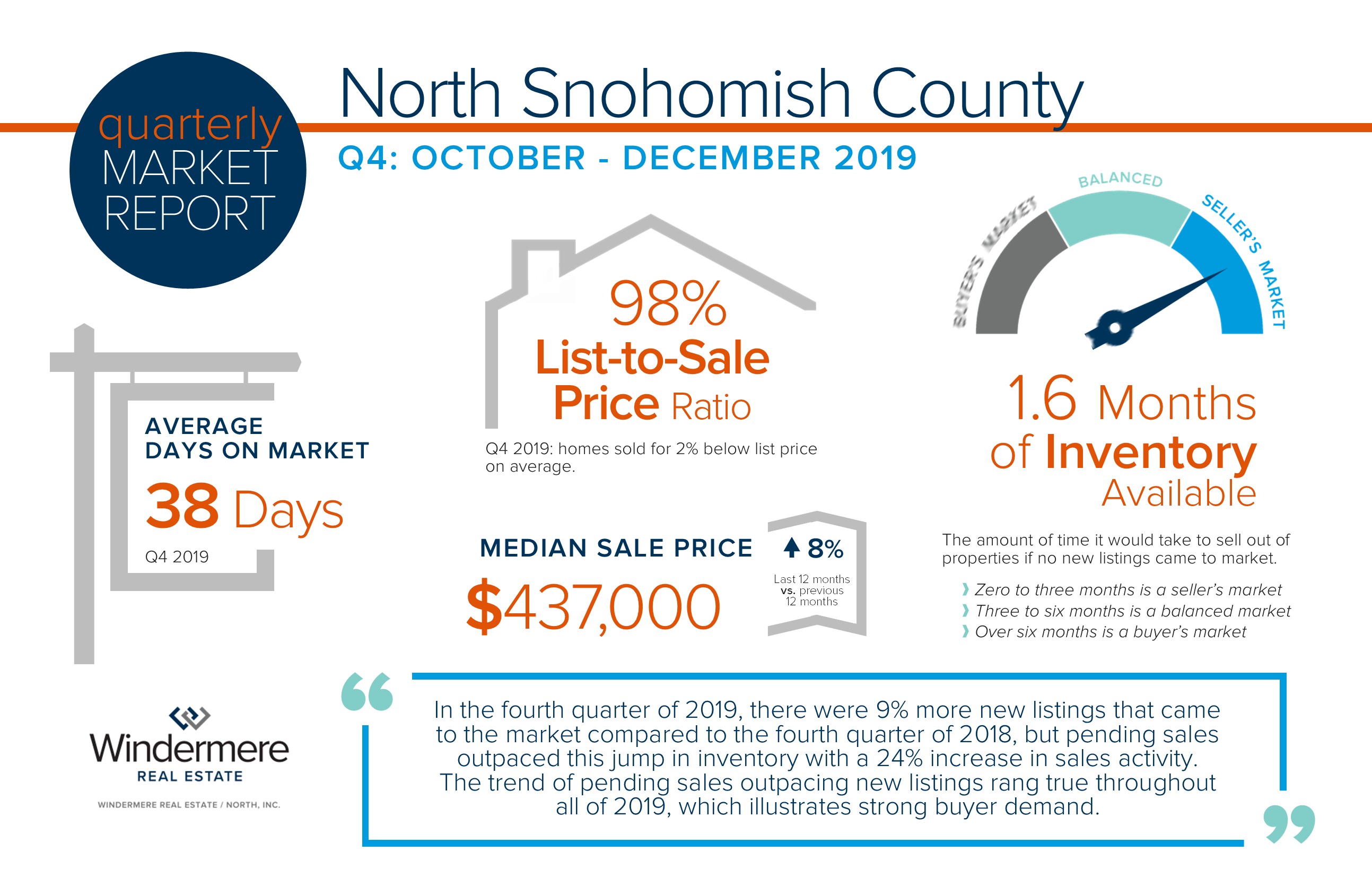Most recently, we have experienced an uptick in market activity. In fact, King County saw a 35% increase in pending sales from December to January, and Snohomish County 38%. The seasonal uptick from the holidays to the New Year is normal, but it was quite sizable. This is reinforced by a 6% increase in pending activity this January over last January in King County, and a 10% increase in Snohomish County. This increase is being driven by multiple factors, such as our thriving economy and growing job market, generational shifts and historically low interest rates.
Currently, rates are as low as 3.5% for a 30-year fixed conventional mortgage – 1 point down from the fourth quarter of 2019. Moreover, the interest rate is down 1.75 points from 2 years ago. These levels are unprecedented! The current rates are as low as they have been in 3 years. This is meaningful because the rule of thumb is that for every one-point decrease in interest rate, a buyer gains ten percent in purchase power. For example, if a buyer is shopping for a $500,000 home and the rate decreases by a point during their search, the buyer could increase their purchase price to $550,000 and keep the same monthly payment.
Why is this important to pay attention to? Affordability! The Greater Seattle area is not an inexpensive place to own a home; we have seen strong appreciation over the last 7 years due to the growth of the job market and overall economy. The interest rate lasts the entire life of the loan and can have a huge impact on the monthly cash flow of a household. This cost savings is also coupled with a balancing out of home-price appreciation. Complete year-over-year, prices are flat in King County and up around 3% in Snohomish County. Note that from 2018 to 2019 we saw an 8% increase in prices in both King and Snohomish Counties. Price appreciation is adjusting to more normal levels and is predicted to increase 5-7% in 2020 over 2019.
As we head into the spring market, the time of year we see the most inventory become available, the interest rates will have a positive influence on both buyers and sellers. Naturally, buyers will enjoy the cost savings, but sellers will enjoy a larger buyer pool looking at their homes due to the opportunities the lower rates are creating. Further, would-be sellers who are also buyers that secured a rate as low as 3.75% via a purchase or refinance in 2015-2017, will consider giving up that lower rate for the right move-up house now that rates would be a lateral move or possibly even lower.
This recent decrease in rate is making the move-up market come alive. Baby Boomers and Gen X’er’s are equity rich and able to make moves to their next upgraded home or fulfill their retirement dreams. What is great about this, is that it opens up inventory for the first-time buyer and helps complete the market cycle. First-time buyers are abundant right now as the Millennial generation is gaining in age and making big life transitions such as getting married, starting families, and buying real estate.
Will these rates last forever? Simply put, no! Right now is a historical low, and depending on economic factors rates could inch up. According to Matthew Gardner, Windermere’s Chief Economist, rates should hover around 4% throughout 2020. While still staying well below the long-term average of 7.99%, increases are increases, and securing today’s rate could be hugely beneficial from a cost-saving perspective. Just like the 1980’s when folks were securing mortgages at 18%, the people that lock down on a rate from today will be telling these stories to their grandchildren. Note the long-term average – it is reasonable to think that rates closer to that must be in our future at some point.
So what does this mean for you? If you have considered making a move, or even your first purchase, today’s rates are a huge plus in helping make that transition more affordable. If you are a seller, bear in mind that today’s interest rate market is creating strong buyer demand, providing a healthy buyer pool for your home. As a homeowner who has no intention to make a move, now might be the time to consider a refinance. What is so exciting about these refinances, is that it is not only possible to reduce your monthly payment, but also your term, depending on which rate you would be coming down from. There are some pretty exciting money saving opportunities for people to take advantage of right now.
If you would like additional information on how today’s interest rates pertain to your housing goals, please contact me. I would be happy to educate you on homes that are available, do a market analysis on your current home, and/or put you in touch with a reputable mortgage professional to help you crunch numbers. Real estate success is rooted in being accurately informed, and it is my goal to help empower you to make sound decisions for your lifestyle and investment.
Celebrate Earth Day with us! We are partnering with Confidential Data Disposal for our 9th year; providing you with a safe, eco-friendly way to reduce your paper trail and help prevent identity theft.
Saturday, April 18th, 10AM to 2PM
4211 Alderwood Mall Blvd, Lynnwood
Bring your sensitive documents to be professionally destroyed on-site. Limit 20 file boxes per visitor.
We will also be collecting non-perishable food and cash donations to benefit Concern for Neighbors food bank. Donations are not required, but are appreciated.
Hope to see you there!
**This is a Paper-Only event. No x-rays, electronics, recyclables, or any other materials.
It’s a great time to begin preparing your home for spring. Here are a few general home maintenance tips to consider this time of year.
- Clean the kitchen exhaust hood & filter.
- Replace the furnace filter. It may be especially filthy after the winter months.
- Inspect the roof for water damage. It’s also a good idea to check any fences, carports and sheds. TIP: check the south end of your roof first; it is the first to show wear.
- Test the batteries in all smoke and carbon monoxide detectors.
- Clear the gutters of any buildup to allow for proper functioning.
- Start the grass revival cycle by aerating, thatching and fertilizing.
- Be sure no inside or outside vents are blocked by fallen debris.
- Clean the windows and screens. Repair any holes in screens or replace them if needed.
- Inspect and repair siding and peeling paint. Fix or replace damaged siding. Strip peeling paint and replace it with a new coat.
- Check the basement for water damage. Pay attention to musty smells, water stain and damp surfaces.
- Invest in a carbon monoxide detector – every home should have at least one.
 Facebook
Facebook
 X
X
 Pinterest
Pinterest
 Copy Link
Copy Link




